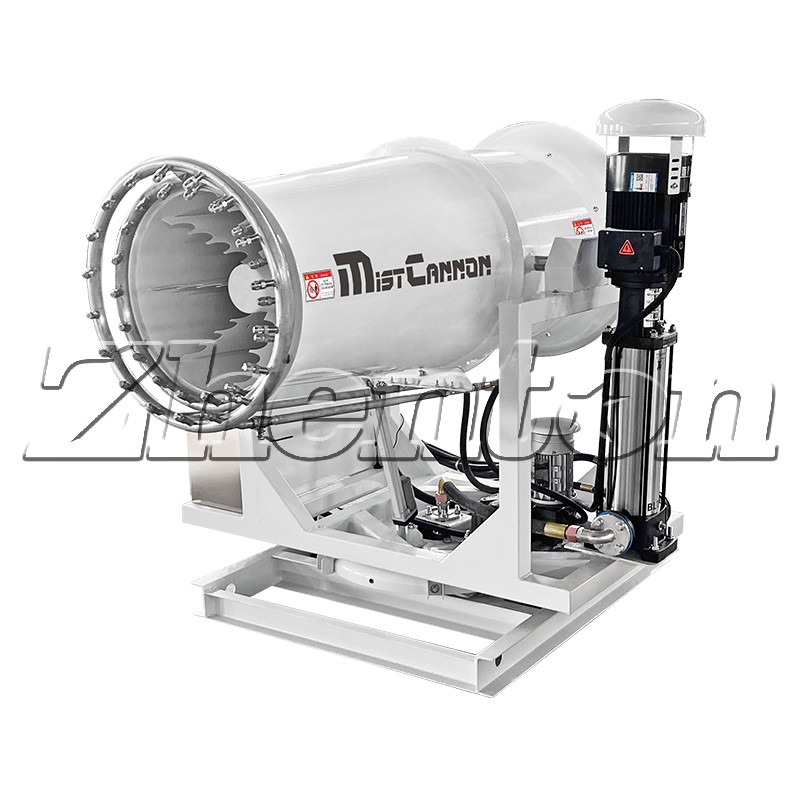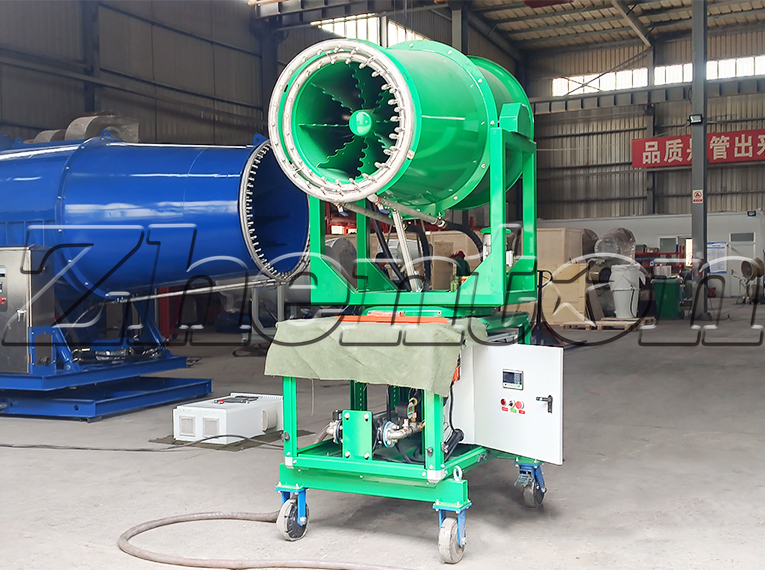
As summer swelters, zoos face dual challenges of heat stress and odor management, impacting both animal welfare and visitor experience. The mobile fog cannon emerges as a scientific solution, leveraging precise atomization and multi-mechanism deodorization to create refreshing microenvironments in zoological gardens.
A 7.5kW pump pressurizes water to 3-8MPa, transforming it via micron-level nozzles into 5-15μm mist droplets—with 300x larger surface area than regular water drops.
As these fine droplets evaporate, they absorb ambient heat (latent heat of vaporization), dropping temperatures by 3-5°C within 10 minutes.
Relieves macaque troops in rocky enclosures by lowering daytime peaks from 38°C to 33°C
Forms a 2m-high cool air layer around elephant habitats, reducing their stress-induced trunk waving by 60%
This evaporative cooling avoids wet surfaces, preventing slips for hooved animals while maintaining optimal humidity (40-60%) for amphibian exhibits.

Ultra-fine mist acts as microscopic sponges, encapsulating odor molecules (NH3, H2S) as it settles
In giraffe feeding areas, mist droplets capture 75% of airborne ammonia within 5 minutes, reducing pungency from 4.5 to 1.2 on the Hedonic Scale
Optional dosing systems inject plant-based deodorants (e.g., citrus extracts) or bio-enzymes:
Terpenes in citrus oil react with NH3 to form odorless ammonium salts
Enzymes break down mercaptans in carnivore excrement, converting them to harmless sulfates
At the panda house, this reduces hydrogen sulfide levels from 25ppm to 7ppm, eliminating the “rotten egg” smell
Mist lowers substrate temperatures (e.g., under primate platforms) from 42°C to 32°C, slowing bacterial reproduction
Reduced microbial activity decreases decomposition rates of feces/food waste, cutting odor generation by 40% in primate enclosures
Tracked chassis: Navigates uneven terrain in safari zones without disturbing grazing animals
Trailer-mounted models: Relocate between exhibits—moved to penguin pools during morning feeds, then to big cat dens in afternoon heat
Silent operation (≤65dB): Avoids stressing auditory-sensitive species like owls, while blending into visitor areas
Improved animal activity levels by 35% during summer peaks
Reduced visitor complaints about odor by 82%

In modern zoological management, the mobile fog cannon isn’t just equipment—it’s a welfare enhancer. By scientifically balancing thermal comfort and air quality, it enables animals to exhibit natural behaviors year-round, while allowing visitors to engage with wildlife in fresh, pleasant environments. As these fog cannons mist across zoo landscapes, they spray more than cool mist—they atomize the boundary between human observation and animal well-being, fostering harmony in every refreshing breeze.
Contact With Us
If you have any questions please fell free to contact with us.